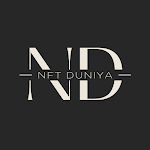Beginner's Guide to NFTs: What Are Non-Fungible Tokens?
summary :
What are non-fungible tokens? NFTs are unique digital assets used to represent tangible and intangible objects.
Beginner's Guide to NFTs
Non Fungible Tokens - Non Fungible Token - or NFT, are unique digital assets that can be used to represent both tangible and intangible objects.
Cryptocurrencies , utility tokens, security tokens, privacy tokens:
digital assets and their classifications are multiplying and evolving together with cryptographic technology and the blockchain .
Non-fungible tokens (NFTs) are one of the fastest growing sectors in the cryptocurrency universe.
NFTs are characterized by these properties:
- each NFT is unique
- they cannot be directly replaced by another token
- no two NFTs are alike
- non-fungible tokens are not divisible
With this Guide to Cryptocurrencies we try to deepen to understand what they are, how they work and how they are used.
What are non-fungible tokens?
Non-fungible tokens are digital assets that contain identifying information registered in smart contracts .
This information makes each NFT unique and, as such, cannot be directly replaced by another token.
They cannot be mistaken as similar, as no two NFTs are alike .
The banknotes, on the other hand, can simply be exchanged for each other; if they have the same value, there is no difference for the holder between one dollar bill and another.
Bitcoin is a fungible token . You can send someone a Bitcoin and they can send one back, and you still have a Bitcoin.
You can also send or receive smaller amounts of a Bitcoin, measured in satoshi (think satoshi as Bitcoin cents), as fungible tokens are divisible.
Typically, non-fungible tokens aren't divisible , in the same way you can't send someone part of a football match ticket;
a part of a ticket to a football match would not allow you to enter the stadium, so it would be worth nothing in and of itself.
Let's take CryptoKitties collectibles as an example.
What are CryptoKitties?
Discover the Cryptokitties
CryptoKitties was the first game built on the Ethereum blockchain. in the game , players purchase, trade and breed cats to create desirable traits.
They were among the first NFTs. Each blockchain-based digital kitten is unique; if you send a CryptoKitty to someone or receive a CryptoKitty from someone else, what you will receive will be a unique and completely different CryptoKitty than the one you sent. Collecting several digital kittens is in fact the focus of the game.
The unique information of a non-fungible token, such as a CryptoKitty, is stored in its smart-contract and immutably recorded on that token's blockchain.
CryptoKitties were originally launched as an ERC-721 token on the Ethereum blockchain, but have since migrated to their blockchain, Flow, to be easier for new users to access.
What makes NFTs so special?
Non-fungible tokens have unique attributes and are tied to a specific and unique asset.
They can be used to prove ownership of digital objects such as game skins up to ownership of physical assets.
Other tokens, on the other hand, are fungible in the same way as coins or banknotes.
Fungible tokens differ from NFTs precisely because they are identical, have the same attributes and value when exchanged.
How are non-fungible tokens used?
In addition to representing digital collectibles and an exclusive property thereof (such as CryptoKitties, NBA Top Shot, and Sorare), non-fungible tokens can be used for digital assets that need to be differentiated from each other and to prove their value or scarcity.
With NFTs you can represent anything: from virtual plots of land to works of art, to property licenses.
NFTs are bought and sold on NFT markets. Dedicated markets such as OpenSea and Rarible have so far dominated the field but recently some of the major cryptocurrency exchanges have started to make their way in this area as well.
In June 2021, cryptocurrency exchange Binance launched its own NFT market, while rival Coinbase announced its plans for an NFT market in October 2021, with over 1.4 million users subscribing to the list. 'wait in the first 48 hours.
How do NFTs work?
Tokens such as the ERC-20 tokens based on Bitcoin and Ethereum (ETH) are fungible.
Ethereum's non-fungible token standard, used by platforms such as CryptoKitties and Decentraland (MANA), is ERC-721.
Non-fungible tokens can also be created on other smart contract-enabled blockchains with tools and support for non-fungible tokens.
Although Ethereum was the first to be widely used, the ecosystem is expanding, with blockchains including Solana, NEO, Tezos, EOS, Flow, Secret Network, and TRON supporting NFT.
Non-fungible tokens and related smart contracts allow you to add detailed attributes, such as owner identity, advanced metadata, or links to protected files.
The power of non-fungible tokens to immutably prove digital ownership is an important advance for an increasingly digital world.
They could make it possible to fulfill the promise of the blockchain of security without trust applied to the ownership or exchange of almost any asset.
Like blockchain, non-fungible tokens, their protocols and smart contract technology are still under development and expansion.
Creating decentralized applications and platforms for managing and creating NFTs is still relatively complicated and this is combined with the challenge of creating a standard.
The development of the blockchain is fragmented, many developers are working on their own projects.
Unified protocols and interoperability may be required to be successful.

.jpeg)





0 Comments